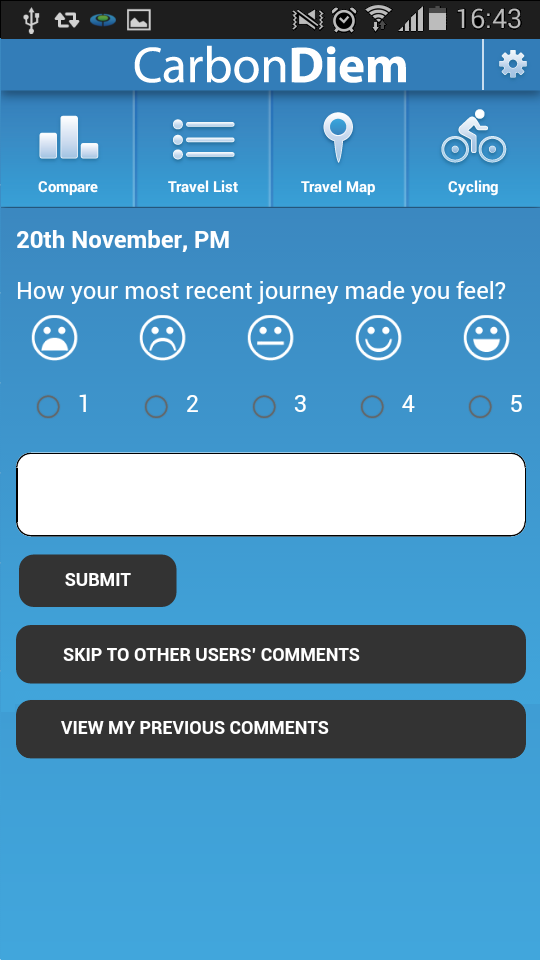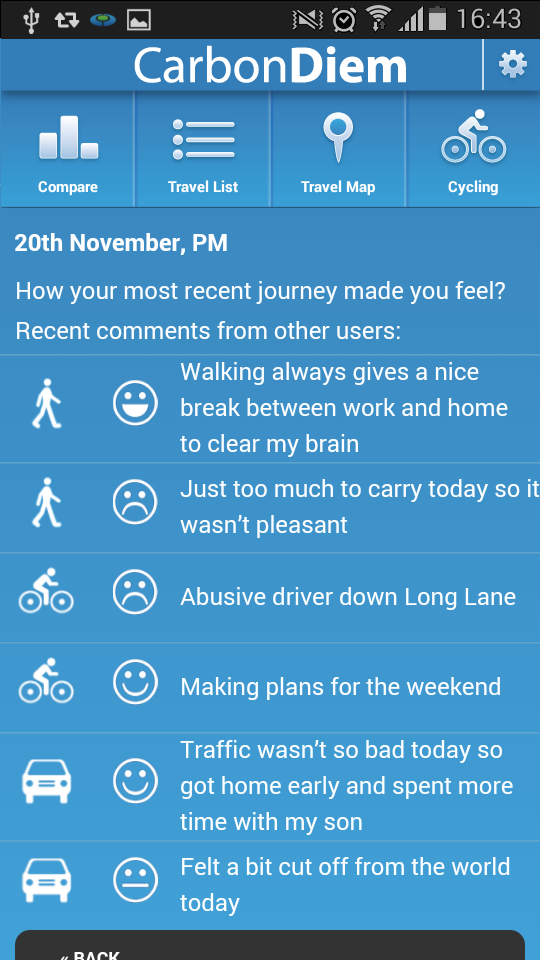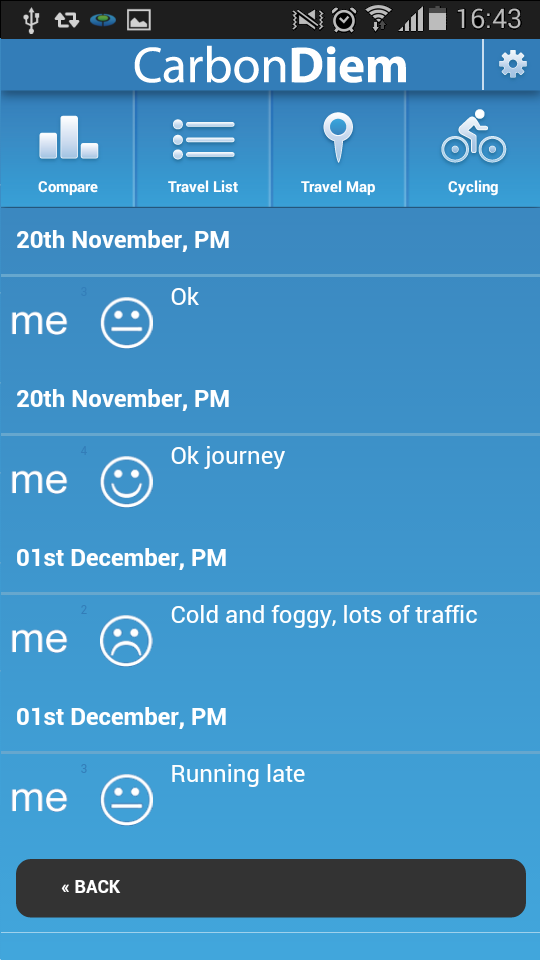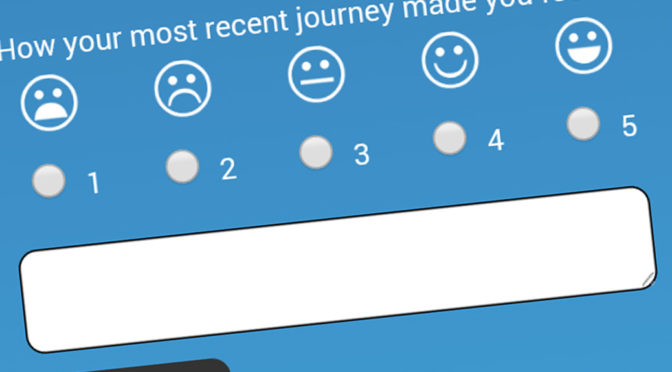The Reflect Project was looking into ways to promote sustainable modes of transport such as walking and cycling instead of driving.
I was involved in studies using social comparison of subjective wellbeing to motivate reflection and attitude change. Examples of my activities included:
- Plan and develop experiments to understand people’s subjective well-being during the commute to and from work
- Design and implement social comparison methods via a mobile phone intervention to motivate reflection and the adoption of sustainable transport options
- Run trials when participants tested the app for 2 weeks
- Collect and analyse quantitative and qualitative data
- Communicate findings during project meetings and produce academic papers
Smartphone app
I developed a few pages of a smartphone application, which were embedded within an existing app. These pages collected users’ comments and ratings about their commute journeys, therefore working as a experience sampling method. The pages below were shown to car drivers with the intent to make them reflect on their own wellbeing.



Behaviour change strategy
Numerous studies show that people cycling or walking to work are happier than car drivers. Some of the explanations include:
- Active commute provides further benefits such as improved health from physical exercise
- Contact with landscape
- Harmony with one’s environmental values
- Lower cost
- Less stress
- Feelings of autonomy
- Self-efficacy
Therefore, our intention with this study was to show car drivers that people cycling and walking may be happier due to their mode of transport. It explores the potential for a technological strategy using social comparison of travel experiences to motivate car drivers to consider active modes.
Methods
Using an A/B methodology, this project compared a series of measurements including intention to change and attitudes towards different modes of transport. Pre- and post-intervention questionnaires and interviews were used to understand user perceptions and evaluate effectiveness of the application.
The strategies implemented promoted reflection on participants’ travel behaviours. They declared envisioning an improved commute experience with cycling and walking to work. It indicates the first steps towards switching from car driving to active modes of transport.
More information
A short paper was presented at the Enviroinfo conference:
Phone-based presentation of other commuters’ subjective experiences: impact on car-driver intentions
Another conference paper was produced with part of these results:
A more complete journal article is being currently finalised.

